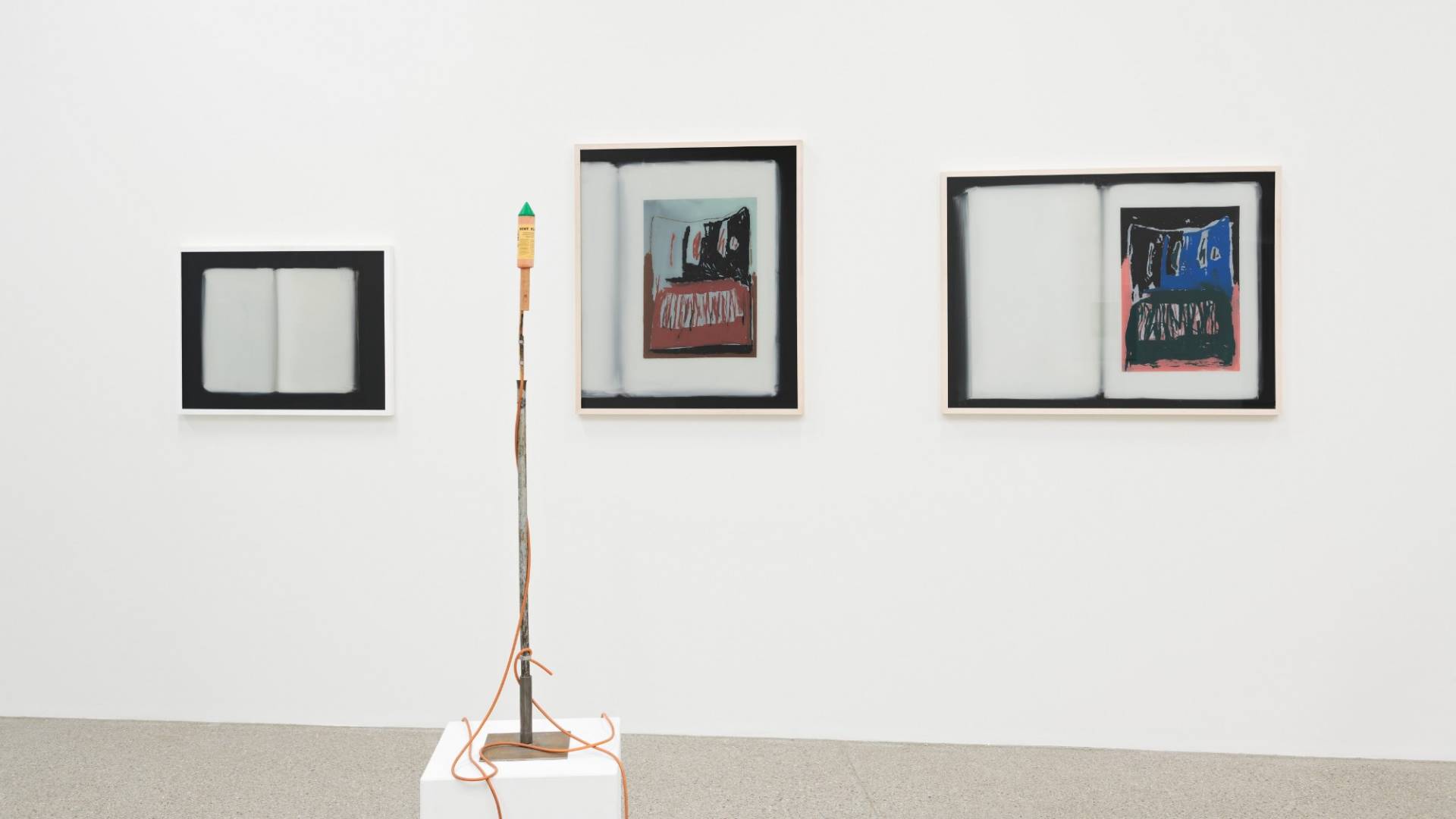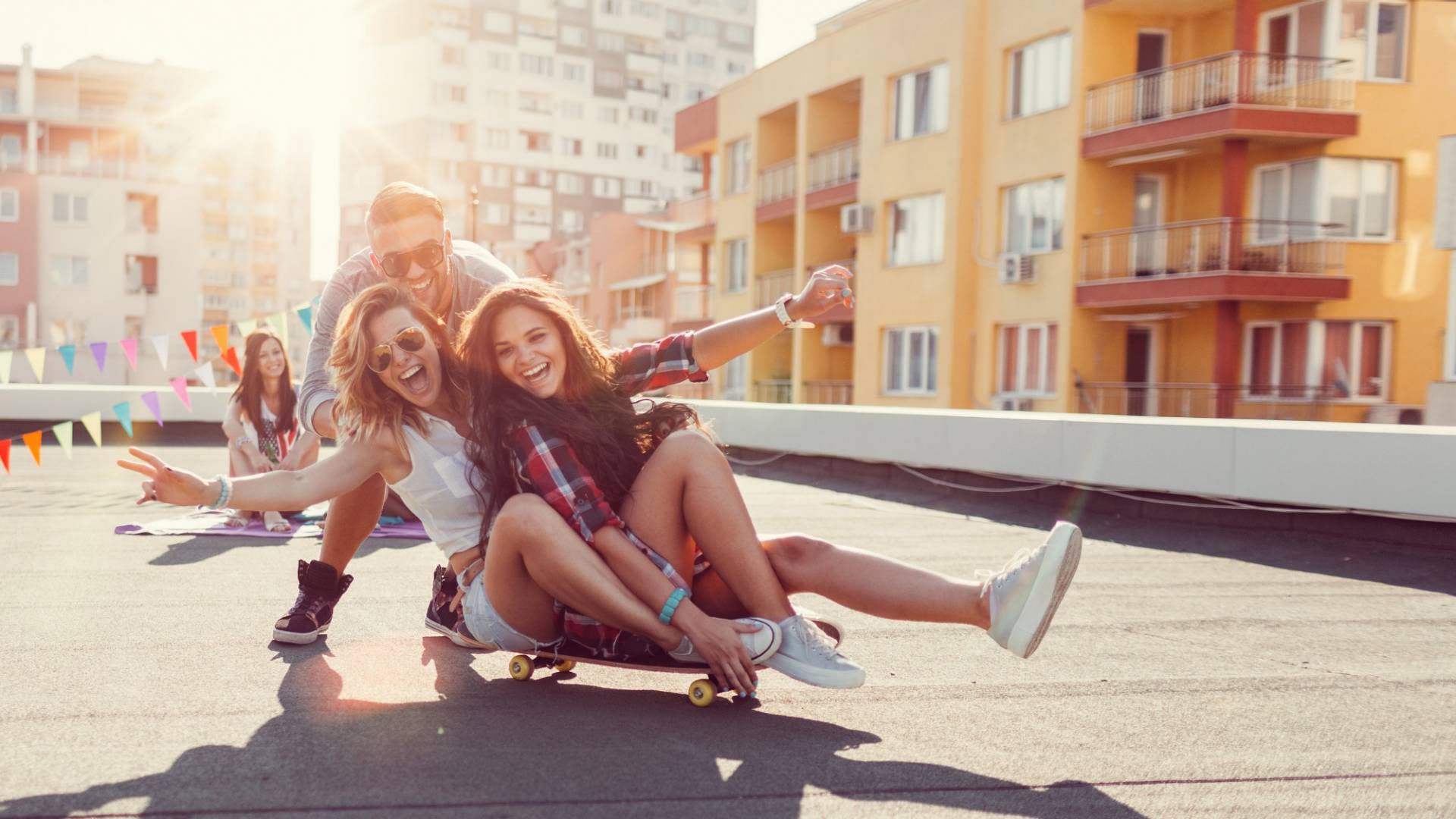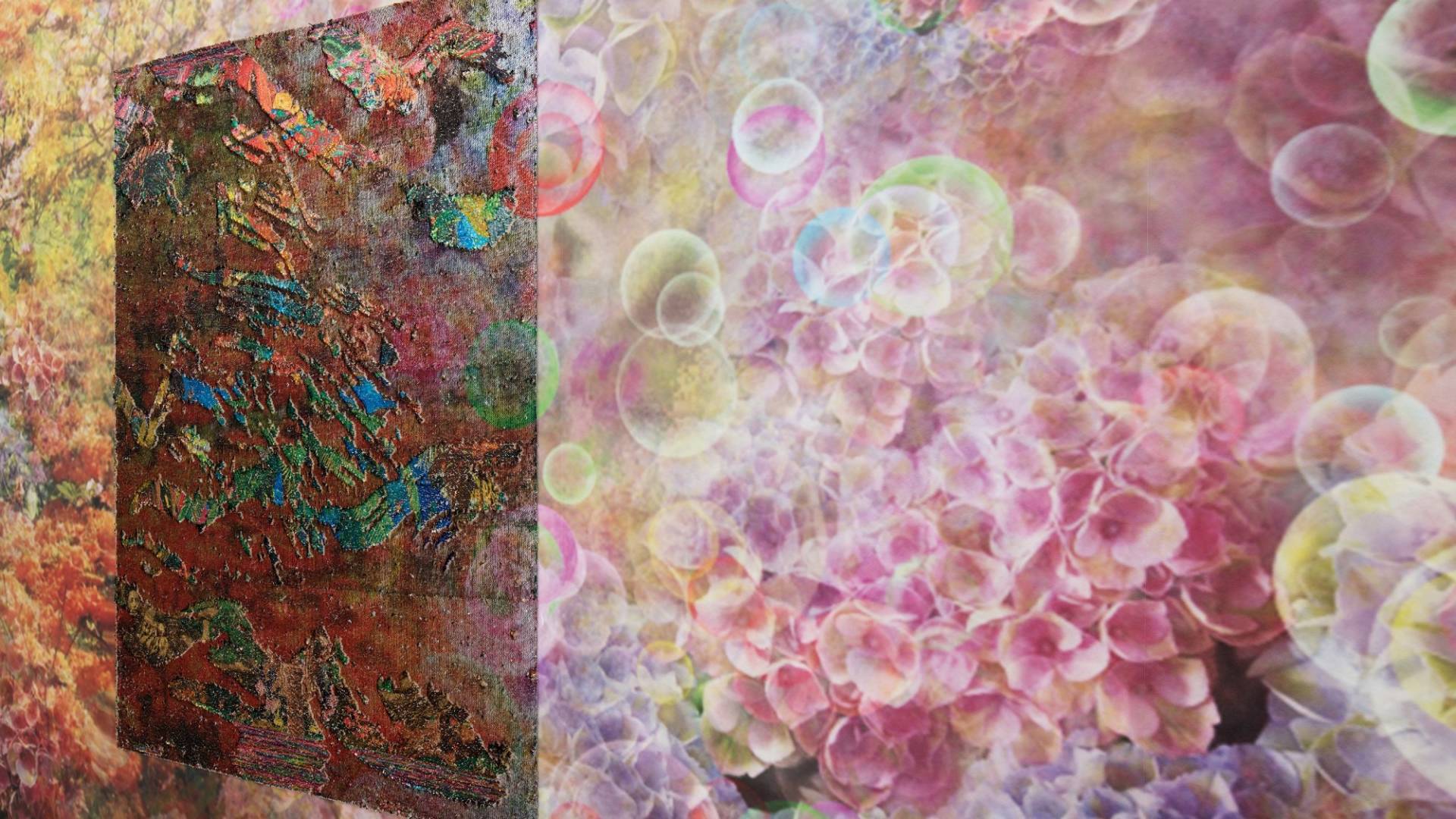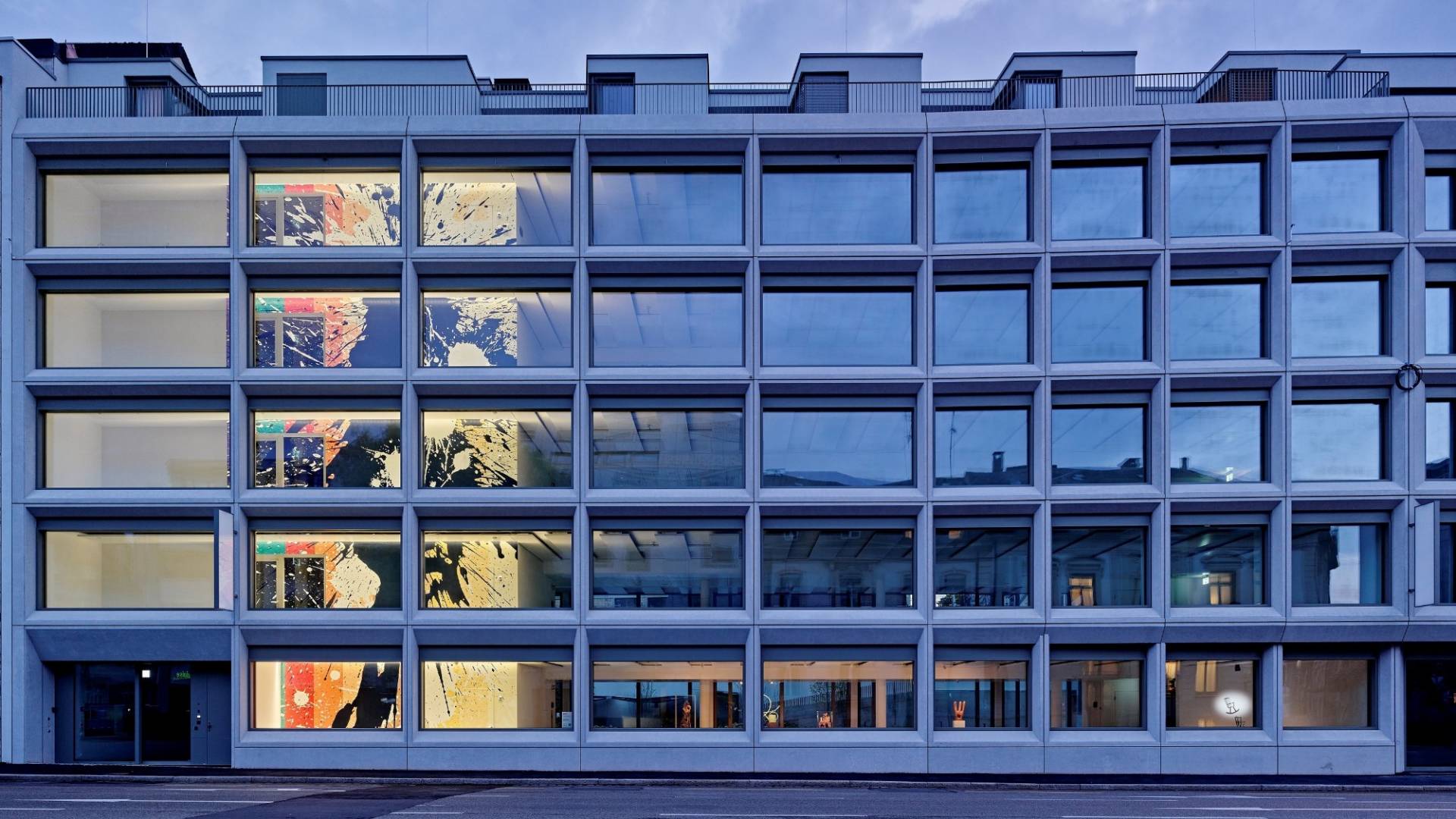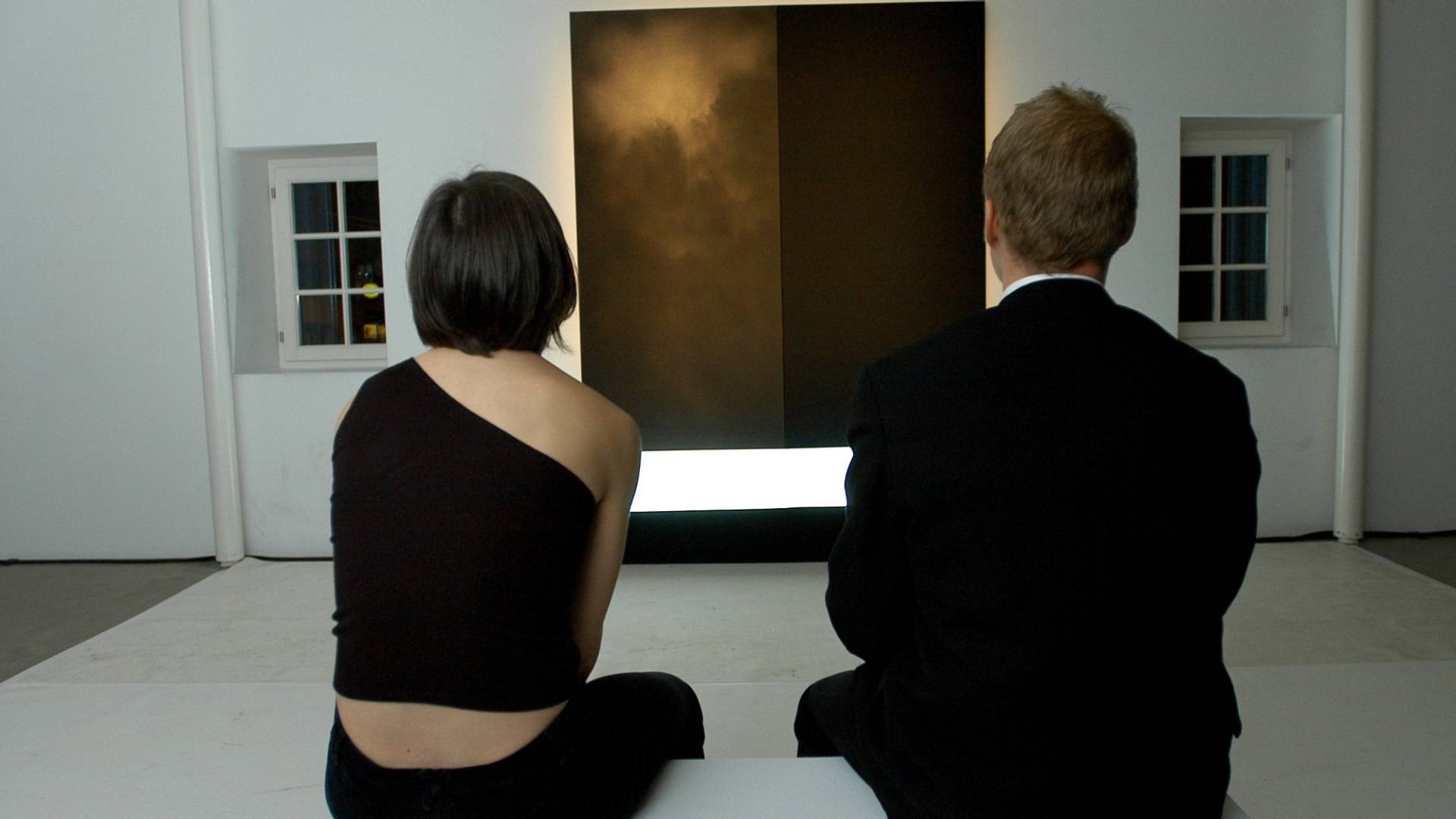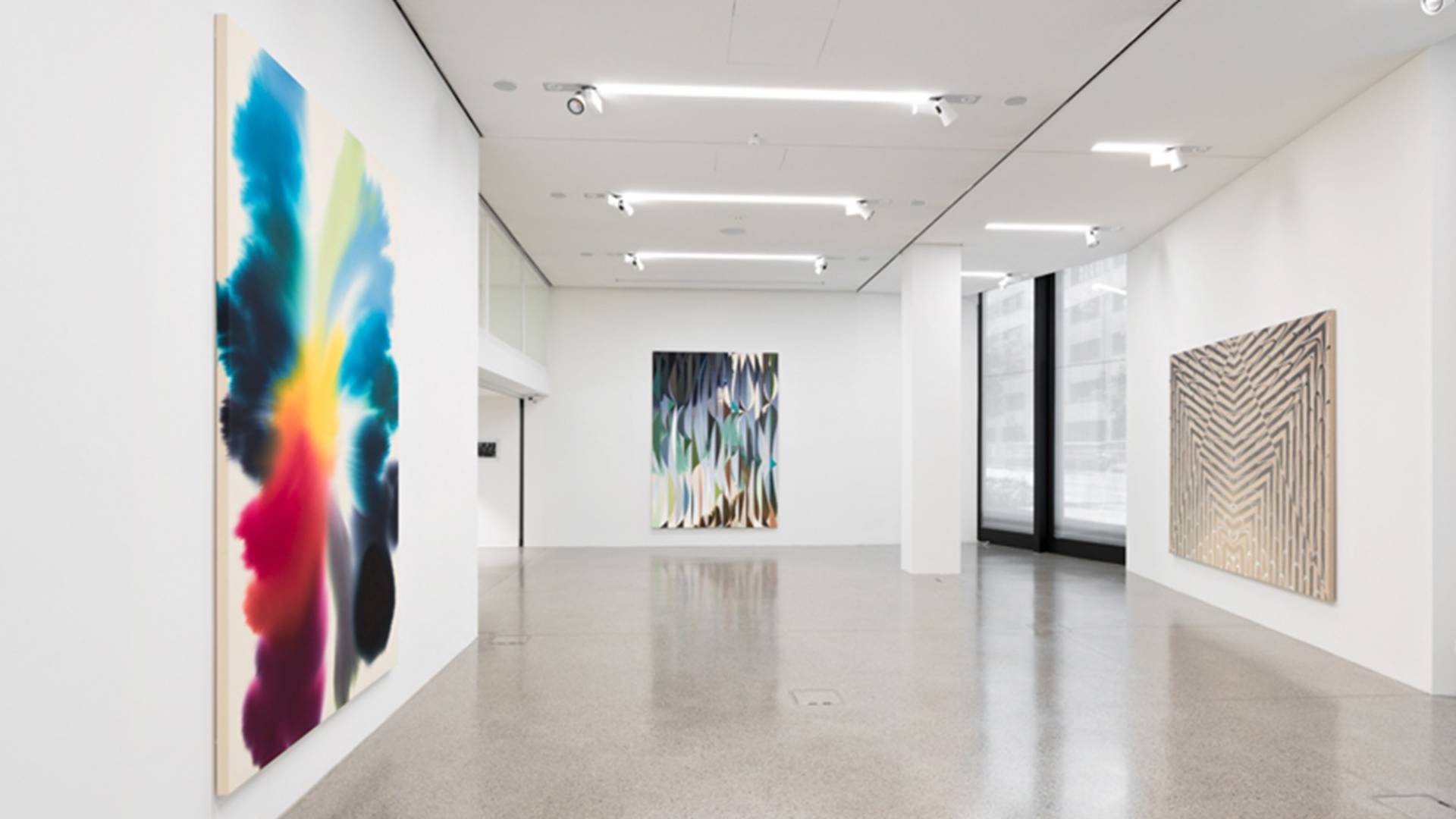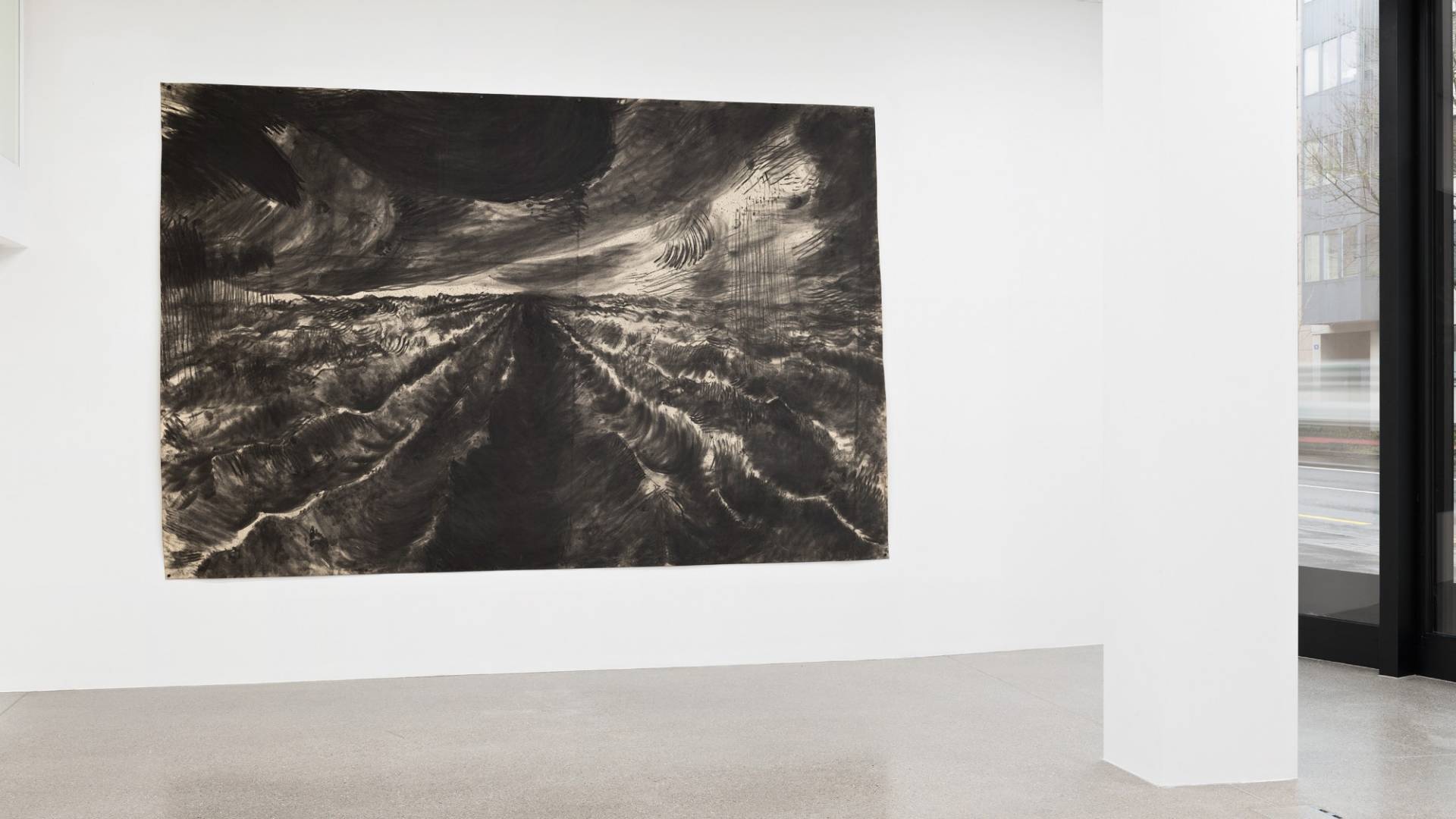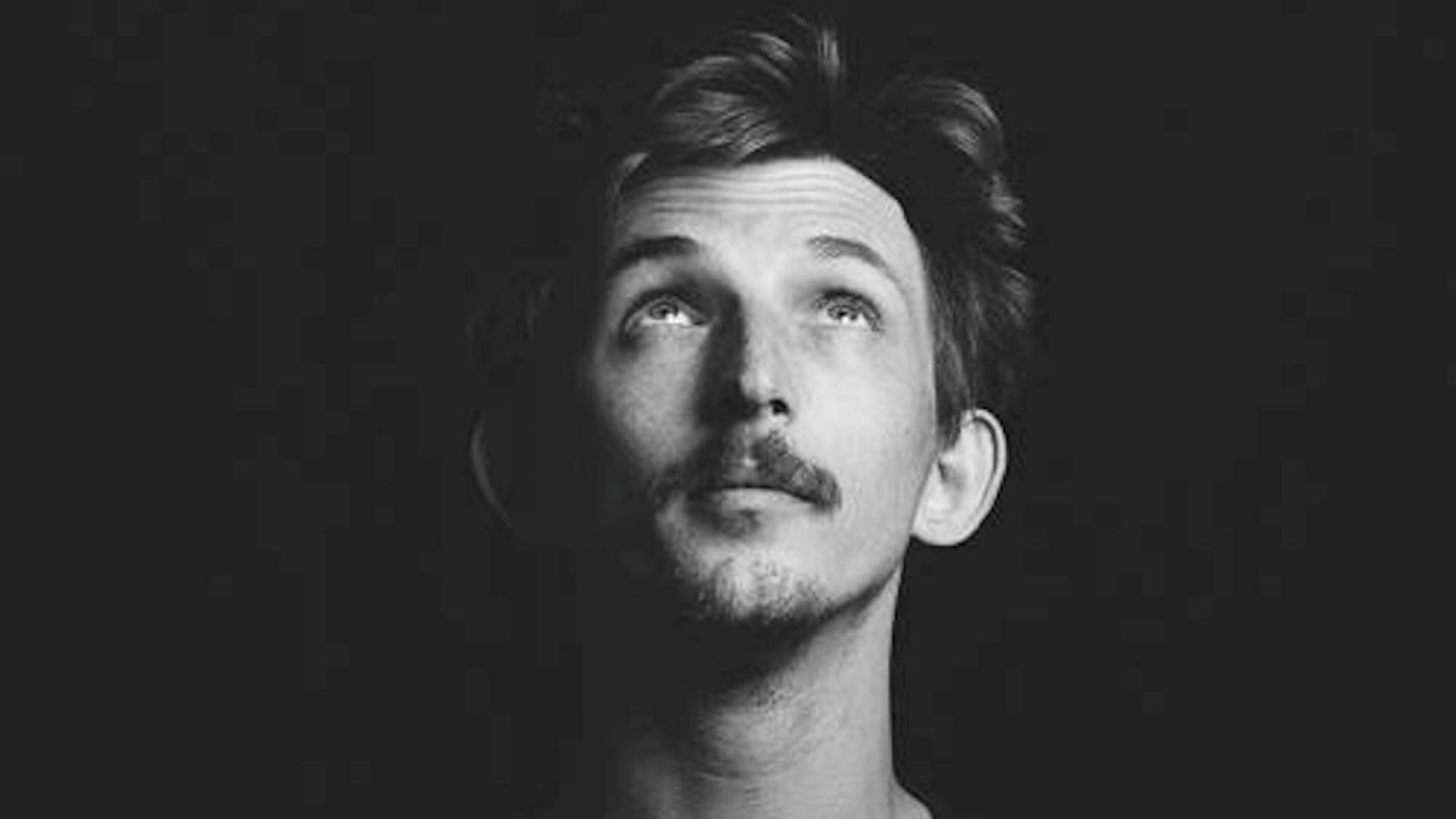-
Multi-faceted encounter at the Helvetia Art Foyer
16.12.2021 | Mirjam Arnold | Viktor KolibàlWorks of art are inspiring. And they also of course inspire other artists. The exhibition “High 5” at the Helvetia Art Foyer brings together a number of “artistic dialogues” that five Basel-based artists create by combining their own works with selected exhibits from the Helvetia art collection.
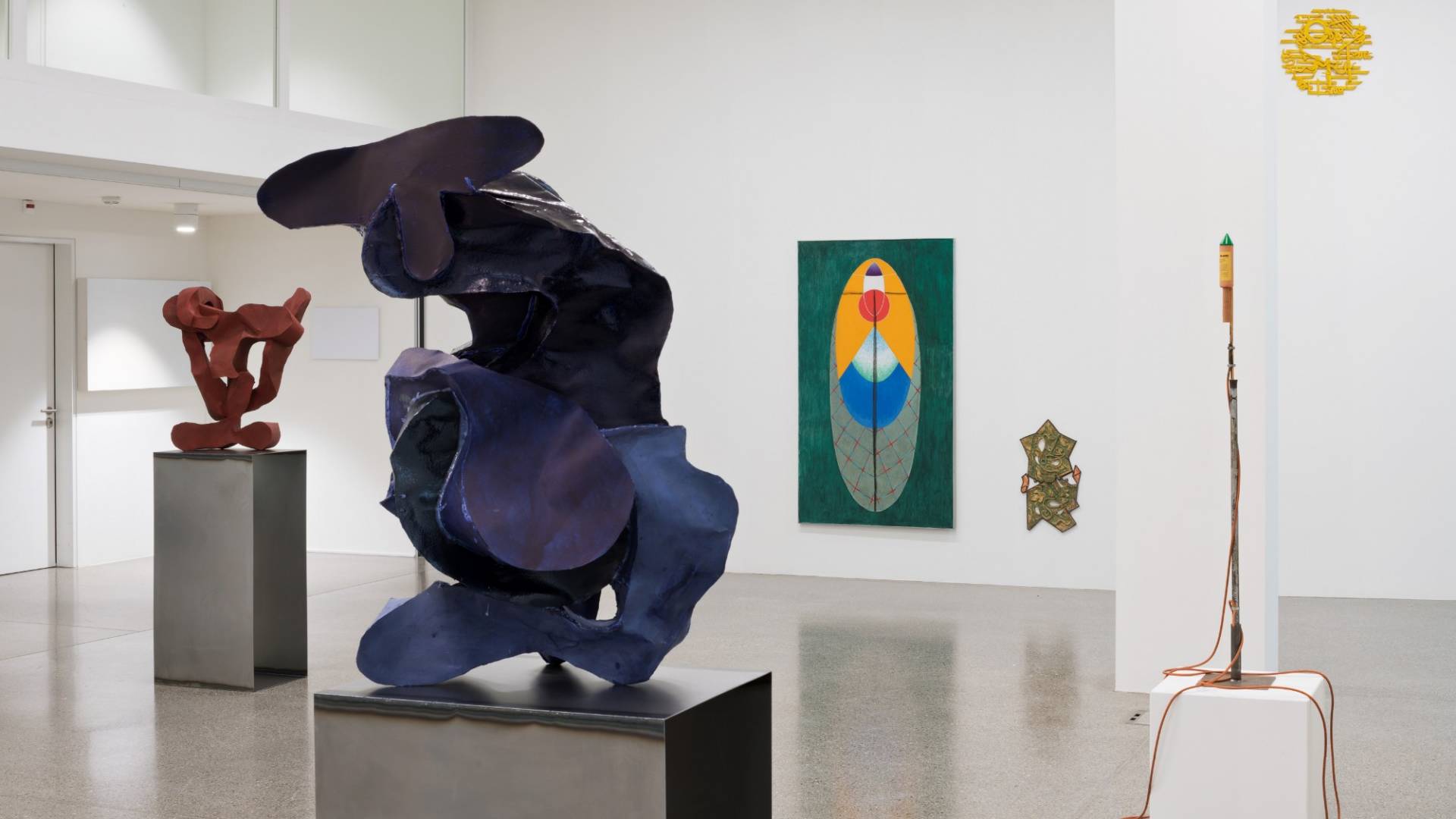
Multi-faceted encounter at the Helvetia Art Foyer

The dialogue-based exhibition “High 5” is an encounter: Five Basel artists each chose one exhibit from the Helvetia art collection that they then juxtaposed with their own works. They had plenty to choose from: with over 2,000 works by around 400 artists, the Helvetia art collection is one of the leading collections of contemporary Swiss art. The Helvetia Art Foyer proved to be the ideal space – not only for presenting the different works of art but also as a place of encounter for their creators.
Colourful interaction
Franziska Furter (b. 1972) chose two small-format works from the Helvetia art collection by an artist she knows personally and whose work she admires: Manon Bellet. Since Manon Bellet currently lives in the USA, their conversations have surely become less frequent. Yet Furter certainly succeeded at least in initiating a dialogue between the two artists’ works. These are characterized by the ephemeral and the coincidental – themes that are reflected in the paintings in unconventional ways. Whereas Manon Bellet drew her works using a magnet and an iron-containing liquid, Franziska Furter opted for coloured ink and watercolour. Using the marbling technique, she mixed a variety of colours on a lye-containing water surface and then captured the play of colours on the paper. Reflecting the diversity of colours, her series is titled “Scattered Rainbows”.
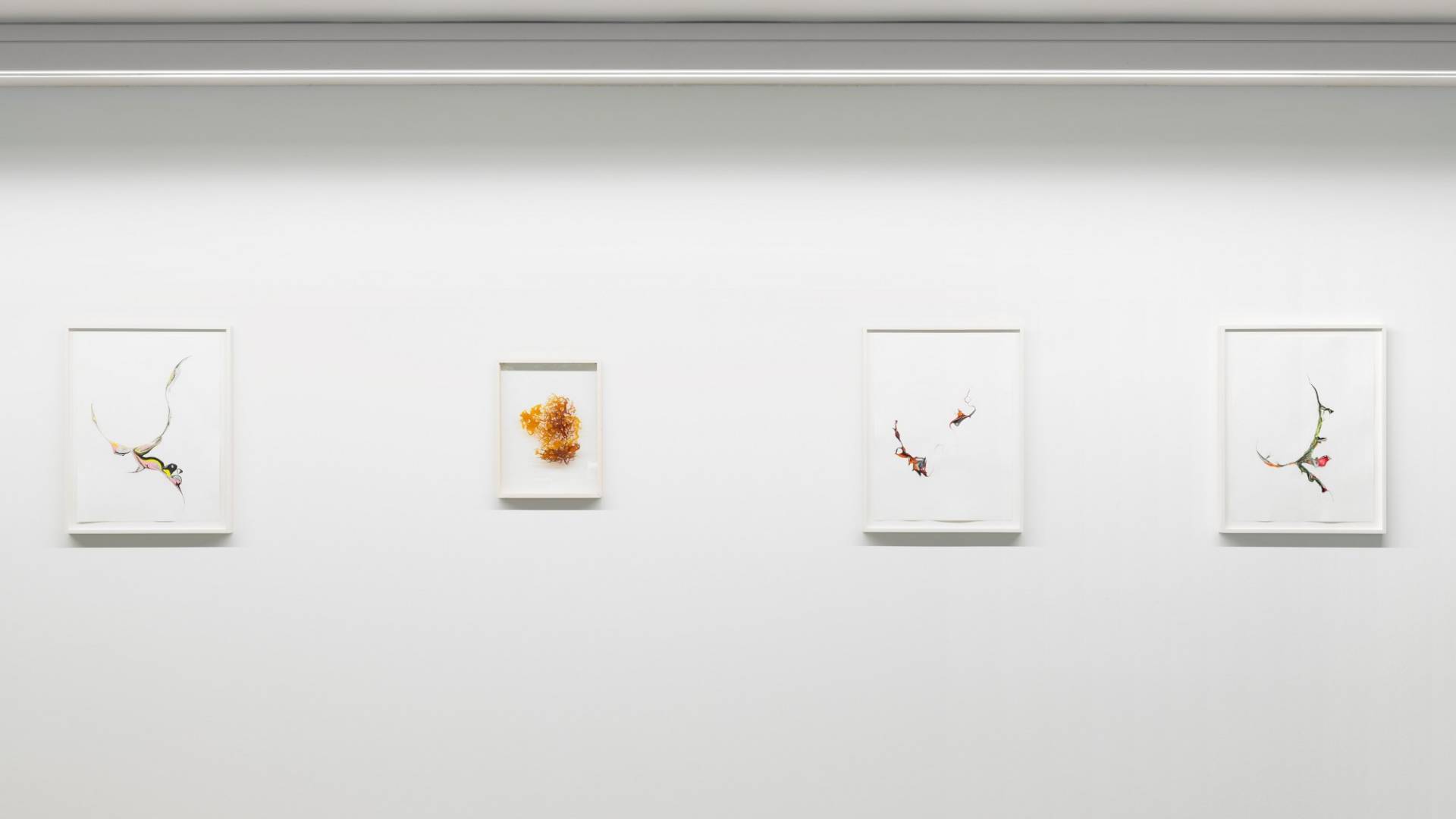
Works that extend beyond the frame
The dialogue that arises between the works of Camillo Paravicini (b. 1987) and Max von Moos is less colourful. Both of these artists grew up in Lucerne. “Lava”, which von Moos produced in 1961, is now flanked by two newly created works by Paravicini. At first sight, these match it in terms of both colour and content. Titled “Götterdämmerung” and “Totentanz”, moreover, they reference motifs that are central to Max von Moos’ work. The interplay between the works arises not least of all from the way in which Paravicini has matched the frames to each other.
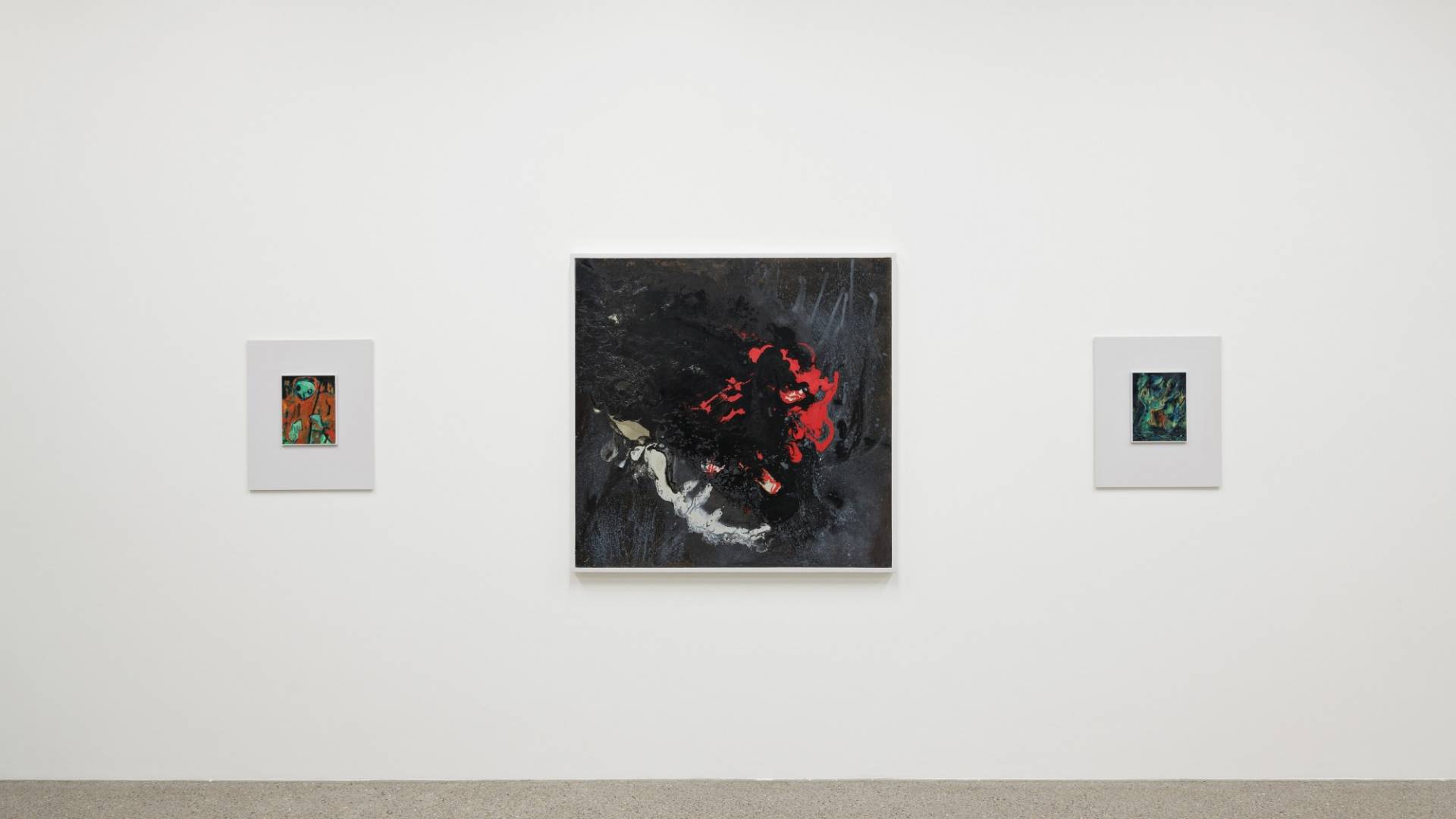
The dialogue may begin!
Just a few metres in front of the pictures by Camillo Paravicini and Max von Moos stands a red sculpture, which appears to pick up the red splash of colour in the “Lava” picture. But that is just one example of the many “lateral dialogues” currently taking place at the Helvetia Art Foyer. Simone Holliger (b. 1986) also chose a picture by Max von Moos – “Fundstelle” (1953) – as the dialogue partner for her works, though this Basel artist is especially interested in the treatment of surfaces. Her sculptures evolve from two-dimensional sketches and are formed out of paper. The same question arises with regard both to her works and to those of Max von Moos: when does a form become a figure?
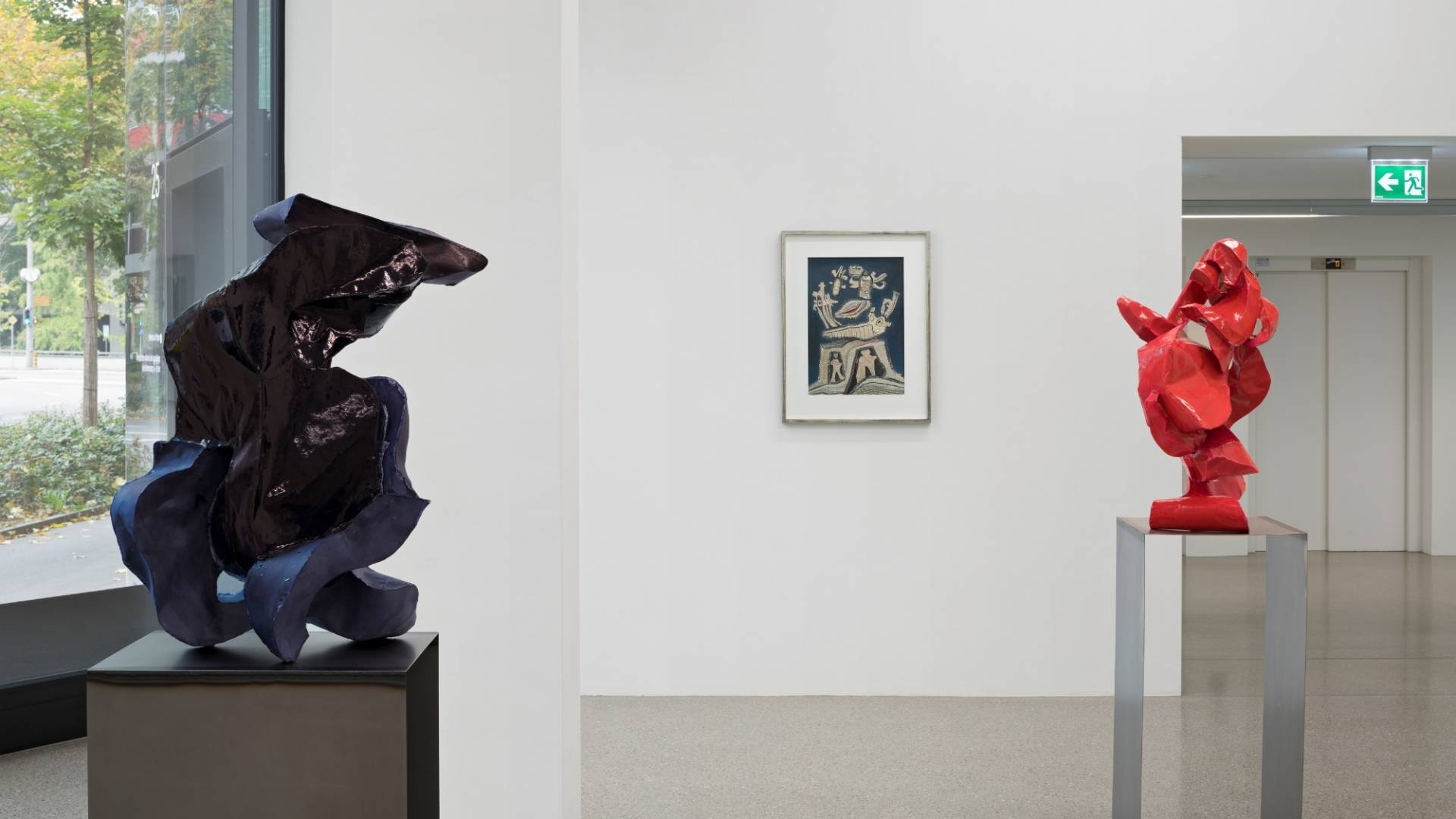
Combination provides new context
Also reminiscent of figures are the two works by Martin Chramosta (b. 1982), which the artist juxtaposes with “Le bouclier du Chef” by Meret Oppenheim. Whereas his ceramic work “Yellow Charm”, positioned above Oppenheim’s picture, reminds one of a sun, Chramosta's relief “Der Assistent” literally places a little assistant opposite the “big chief”. In pictorial terms, too, the three works are a good match: snakes and an insect are discernible; the viewer feels transposed into the natural world, perhaps even into a primeval forest in which the little indigenous man appears to feel at home.
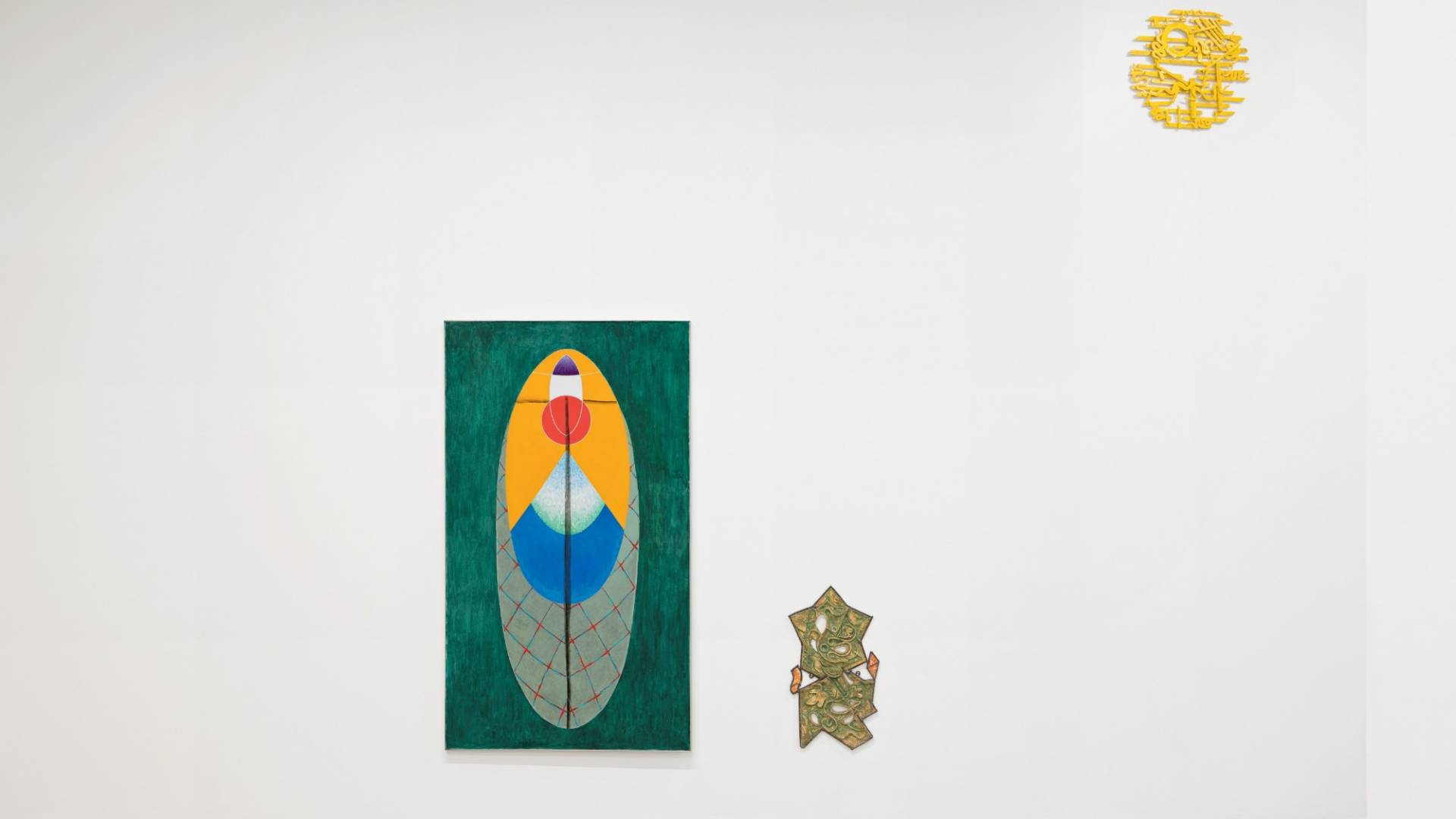
Sparking the imagination
Just a few metres further on, Daniel Karrer (b. 1983) chooses the motif of the empty book for his reverse glass paintings. Right in front of his pictures is Roman Signer’s “Rakete III”, whose launch appears to be imminent. The rocket gives us the impression that we are about to witness a performance. The same applies to the empty books: they seem to be waiting simply to be filled with ideas and plans. The fact that the rocket launch could damage the two reverse glass paintings produces mounting tensions – something potentially dangerous encountering something potentially fragile.
